- Home
- slideshows
- miscellaneous
- This imaginative drawing liked by Elon Musk reveals just how crazy SpaceX's first missions to Mars will be
This imaginative drawing liked by Elon Musk reveals just how crazy SpaceX's first missions to Mars will be
Oberg said he based his drawing on publicly released graphics of the Big Falcon Rocket's spaceship.

Airlock: "Ship exterior inspection and repair must be carried out by space-walks. The airlock is used to allow astronauts to step out of the ship while maintaining pressurization elsewhere."
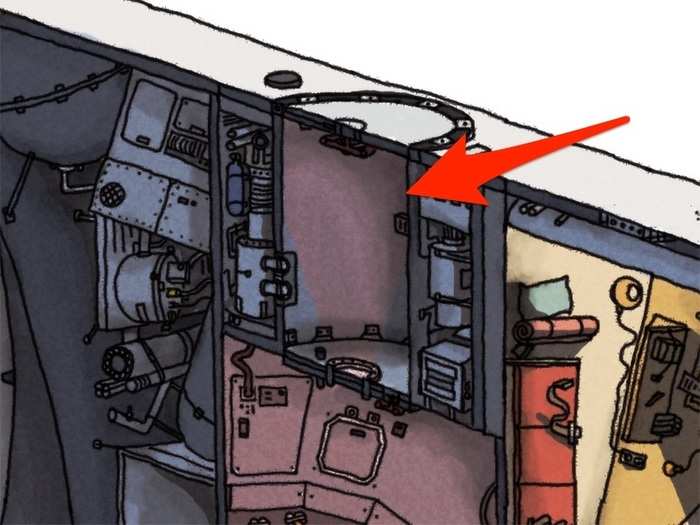
"I figured it would be a vital need to leave the ship and make repairs to, say, a micrometeorite hit to a fuel tank," Oberg said.
Cargo bay: "All large cargo for Mars is stored here. ISRU [resource extraction] equipment, rovers, suits, solar panels, all the gear needed to start a new life far away."
![Cargo bay: "All large cargo for Mars is stored here. ISRU [resource extraction] equipment, rovers, suits, solar panels, all the gear needed to start a new life far away."](https://staticbiassets.in/thumb/msid-65733920,width-700,height-525,imgsize-414772/cargo-bay-all-large-cargo-for-mars-is-stored-here-isru-resource-extraction-equipment-rovers-suits-solar-panels-all-the-gear-needed-to-start-a-new-life-far-away-.jpg)
"I made the cargo bay a bit empty so you can see inside of the ship. I imagine this cargo bay will be much more full than I have imagined it, though," Oberg said. "They'll have to come up with clever packing arrangements. Food will fill a large amount of this volume."
Crane: "Once on the Martian surface, cargo must be carefully hoisted down from the bay to the ground. A heavy duty swiveling crane feeds out pallets via the cargo bay doors."
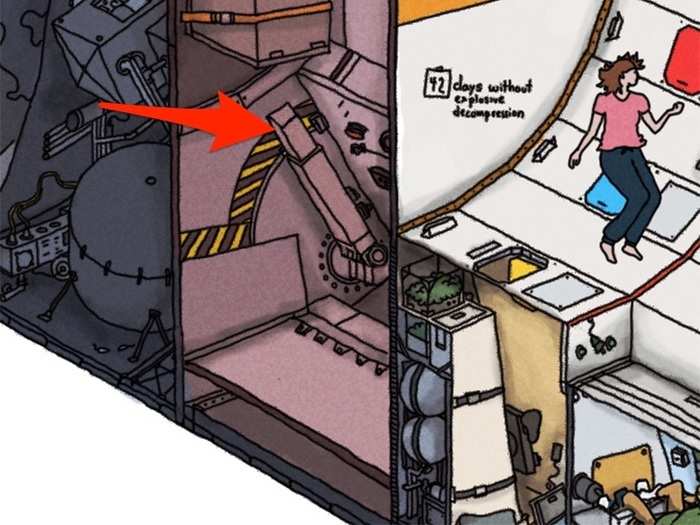
Oberg said the crane was a treat to illustrate, despite its utilitarian nature.
"If you follow really nerdy spaceflight forums, people argue over all of the details — they've literally had a years-long argument about how people will get down from the ship," he said. "Elon [Musk] eventually said, 'A crane.' So I imagine the first people will make it down on some kind of pallet. But maybe a simple rope ladder would suffice?"
Life support system/service bay: "The ship's most important systems are the life support equipment. The temperature is regulated, the water filtered and recycled from waste, the air made breathable once again."

Oberg wasn't sure how to illustrate a life support system. (SpaceX still has a lot of thinking to do there, too.)
"This just shows a bunch of random boxes and pipes that I managed to fit into this shape," Oberg said. "What will be key is that life support systems are easily accessible to the crew for repair. Things will break."
Hydroponics farm: "Far away from Earth, the lack of fresh food becomes demoralizing. The hydroponics farm is more to keep spirits up than it is to provide a sustainable food source."
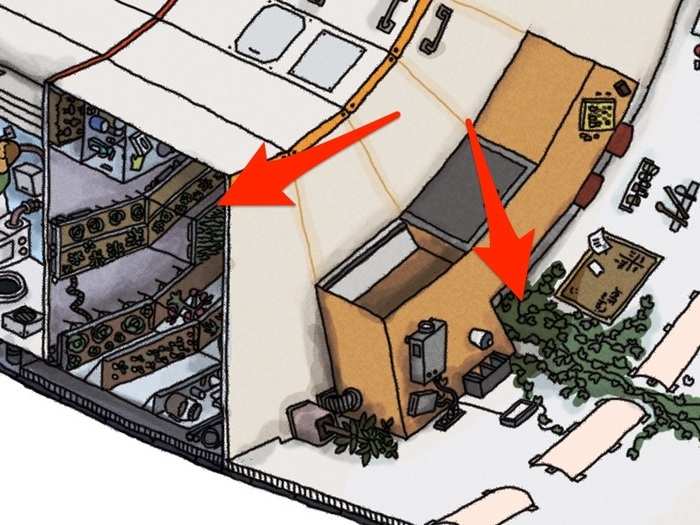
Oberg said astronauts have sometimes described fresh fruits and vegetables as "manna from heaven."
"As a student I've gone weeks eating stuff like pizza and noodles, and your body starts to reject it after awhile. You need fresh food," Oberg said. "These people will be eating dehydrated food for years. Even if plants can't sustain them entirely, they're going to want fresh produce."
Sleeping quarters: "Each crew member has a personal space equipped with bed, illumination, a portal window to the outside, electricity, and connection to the ship net. Removable partitions allow for crew to bunk together and expand their private space if desired."
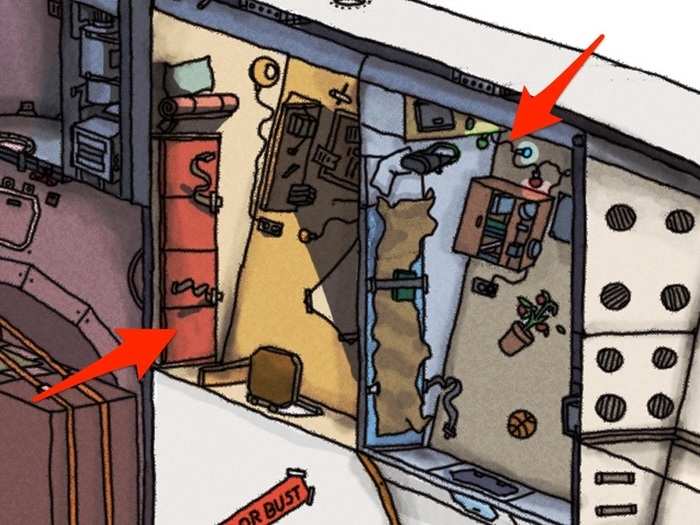
Musk and his companies are known for sleek design, but Oberg thinks a lot of that will go out the window once a crew is on the way to Mars.
"People's little rooms are going to get messy. That's real-life," he said. "If you're stuck for a few months at a time, people will need a private space to hide from each other."
Oberg had to think how the rooms could function both while a crew is flying through space and living on Mars. A SpaceX engineer said in August that the first crews would likely use the spaceship as their habitat.
"You have to remember this whole ship design has to work standing up on the surface of Mars, too," he said. "I imagine these walls are very moveable and temporary, that this wouldn't be a super fixed structure on the inside."
Showers: "Water is pulled through the shower room by powerful fans. Waste heat from the life support system goes into providing hot water. Capacity for up to four crew."
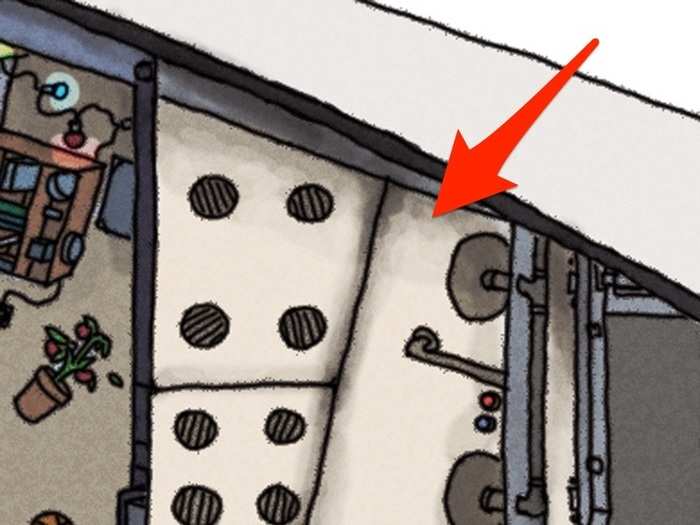
"Astronauts on the space station just scrub themselves with a wet towel. Now imagine you have to scrub for six to eight months," Oberg said. "You're going to want a normal shower. But in zero-gravity that's going to be difficult."
Toilets: "The subject of endless jokes and questions, the space toilet applies suction where and when it is needed. Waste is reprocessed in the life support system and is used for irrigation in the hydroponics lab."
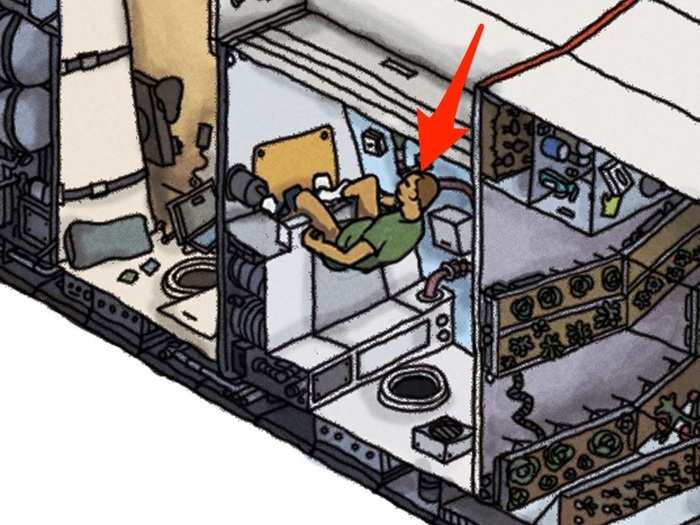
Oberg said the zero-gravity toilet he drew borrows from the one on the International Space Station.
"I added hand grips so people can hold themselves down," he said. "It never looks fun, especially the way the astronauts describe it."
Oberg added a person to the toilet in his drawing after a fan of his work pointed out that Biesty, the author of the well-known cross-section books, "almost always has someone pooping in the background" of his illustrations.
Communal area: "One large open volume dominates the interior ship layout. The area allows for communal activities such as eating, sports and play, musical performances, and movie nights. Exercise and kitchen equipment can be found in this area — and perhaps most importantly, the coffee machine."
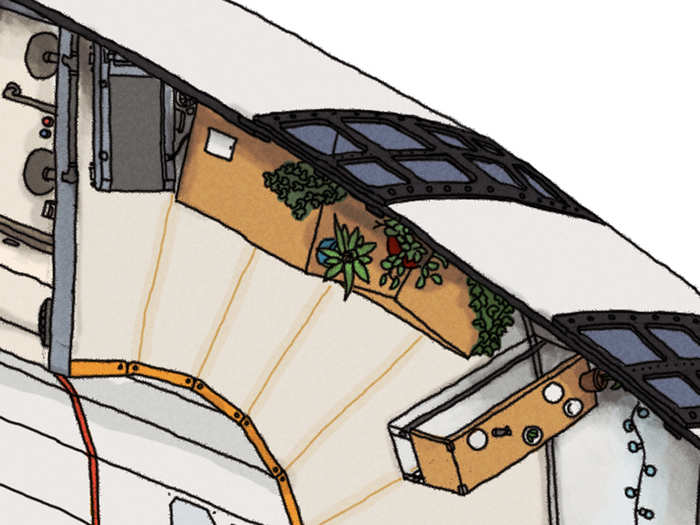
Oberg said the communal area will be fun — an essential place to keep physically and mentally healthy during the voyage to Mars.
"People will absolutely need to exercise. They'll spend a good fraction of their time working out and keeping fit because they'll have to," he said, referring to the bone and muscle loss that happens in zero-gravity.
Ober warned, though, that once on Mars, the large open space in the middle of the ship could become a "pit of death" that people could fall into. "They'll have to set up some kind of net," he said.
An inscription on the cork board says "Jeff who?" — a phrase used jokingly by Musk when people ask about Jeff Bezos or Blue Origin, which is also working on reusable rockets.
The bridge: "All critical ship functions are handled on the bridge. Control terminals allow for manual takeover of navigation and ship systems. Communications with Earth are sent from and received here."
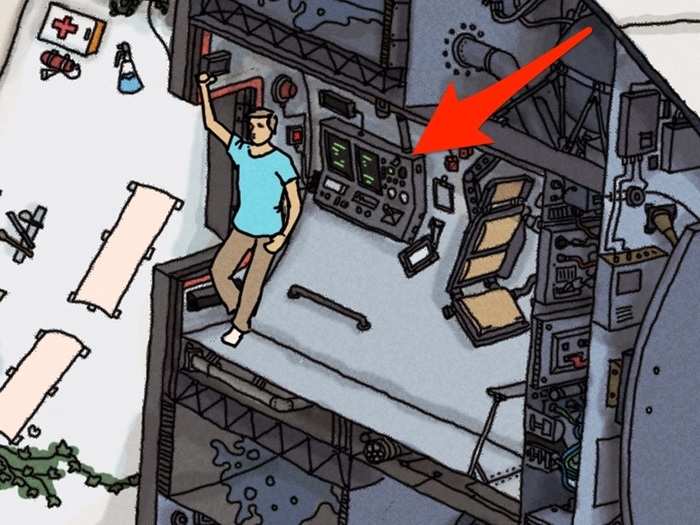
Oberg said he doubts the bridge will be very big, since SpaceX is automating so much of its current spacecraft.
"But it's a staple of science fiction that in every spaceship there is a bridge," he said. "Maybe it will be more of a utility room than a bridge — all the stuff needed to keep a close eye on things like life support."
Storage: "Larger personal effects and items which may need to be retrieved frequently can be found in the forward storage compartment. Everything else goes in the cargo bay."
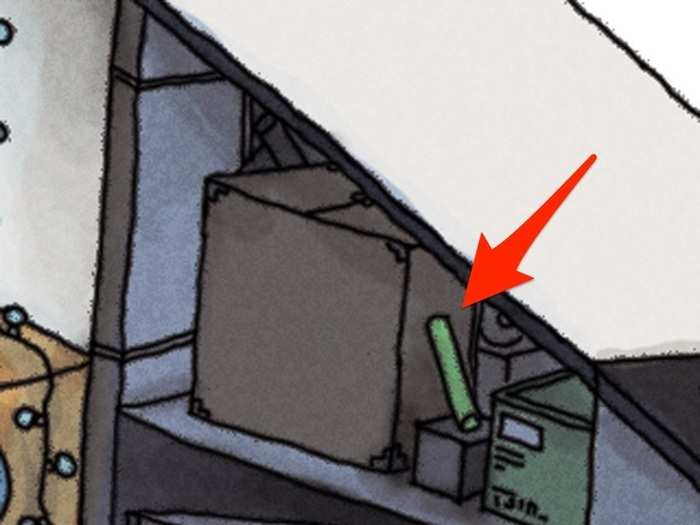
Oberg said the storage area, including a torus of water next to it, could be used to shelter astronauts during a solar storm, which spews high-energy protons that can harm people.
Radiation from deep space will be difficult to defend against during the trip to Mars and on the planet's surface.
"I can't imagine how people are going to be protected from cosmic rays. No idea how SpaceX is going to do this," Oberg said. "I don't see how they can't prevent people's brains from being damaged."
The green bar drawn in the storage area, he added, is an homage to a "Simpsons" episode in which Homer Simpson saves a space mission with a radioactive fuel rod.
Telecommunications array: "This steerable parabolic dish allows for nearly continuous communication with Earth. A low-gain secondary antenna allows for communication in an emergency."
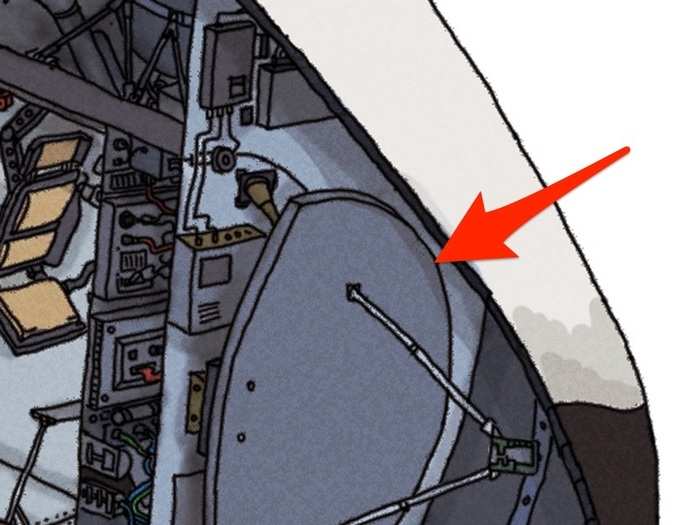
Oberg said he borrowed some of the design elements from NASA's space shuttle orbiters, including the telecommunications array.
Guidance navigation and control: "Reaction control thrusters orient the ship for docking procedures, engine burns, and atmospheric re-entry. Navigation computers, radio timing, and star-trackers keep the ship positioned and oriented in space."
Oberg borrowed the look of the thrusters from SpaceX's Dragon spaceship design and NASA's space shuttles.
"I know they're going to need to reorient this thing in space," he said. "They're also very loud, so you want to keep them away from the crew."
Propellant tanks: "Together, liquid Methane and liquid Oxygen are the fuel that powers the Raptor engines. Smaller tanks hold the propellant for landing."
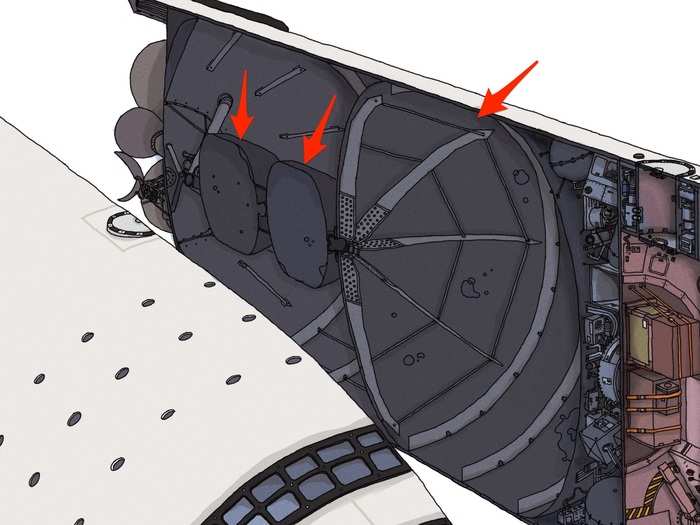
Oberg added lingering droplets of propellant to the large, 30-foot-diameter tanks to indicate that they'd used up more or less all the fuel.
Engines: "The ship is propelled by seven engines; four vacuum Raptors to operate in space and boost the ship between orbits, and three smaller Raptors for landing back on solid surfaces."
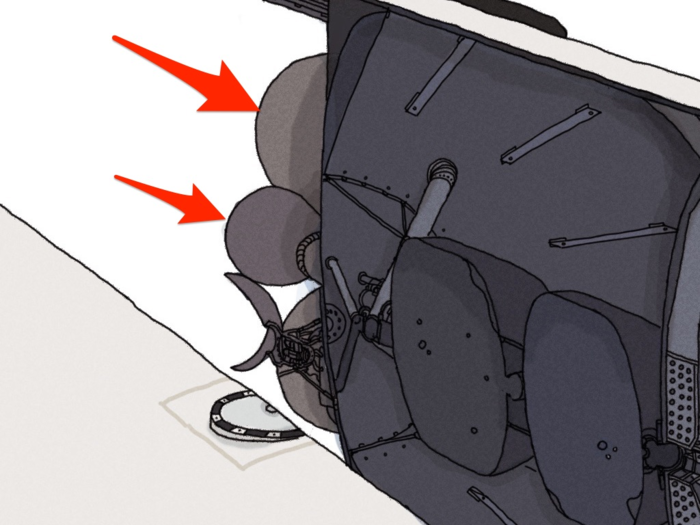
The Raptor engines for the Big Falcon Spaceship are one of the most "real" parts of the spacecraft so far, since engineers have already built and fired smaller-scale versions.
Delta wing: "The small delta wings include a split flap for pitch and roll control in a variety of atmospheric conditions. This allows the ship to safely maneuver itself with a range of different payload masses in the nose."
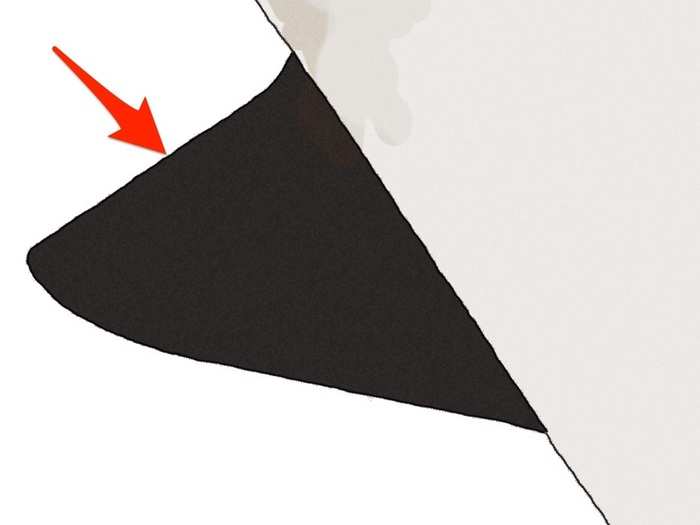
Landing legs: "Four deployable legs at the base of the vehicle allow for a vertical landing."
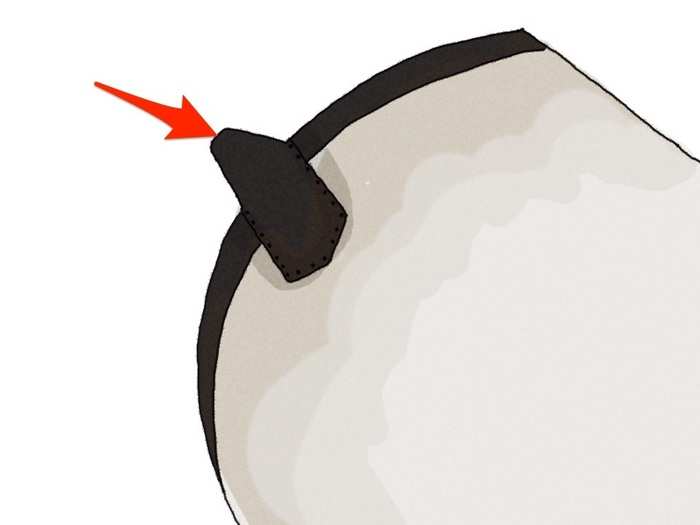
Crew cabin windows: "Every crew compartment is fitted with a single porthole for exterior viewing."
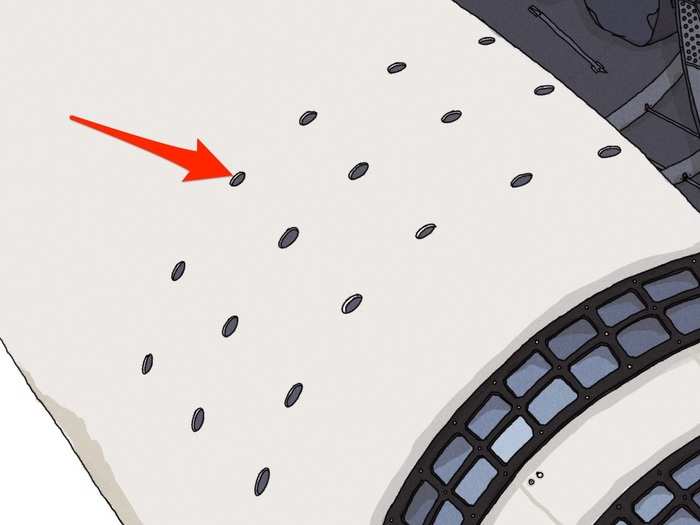
Main windows: "Two long stripes of shutterable window panels allow natural sunlight to enter the communal area to establish a natural day-night cycle for the crew."
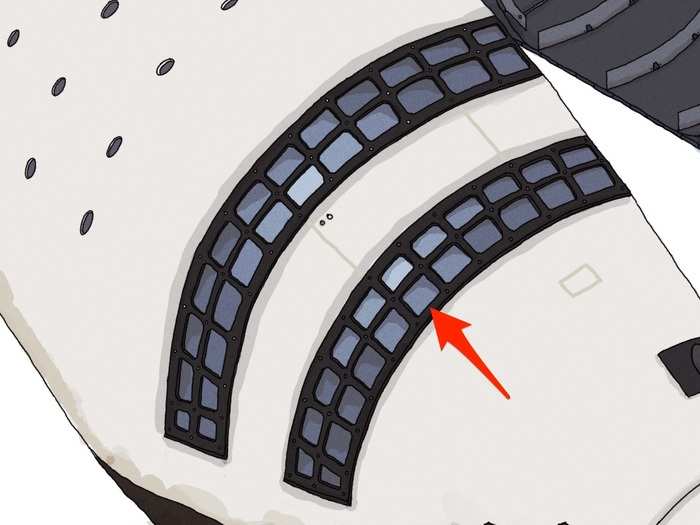
Heat shield: "The underbelly of the ship is coated in heat resistant plates. These sections need to withstand the conditions of atmospheric re-entry from interplanetary velocities and be reusable. For re-entry at high velocities, the shield is expected to partially ablate."
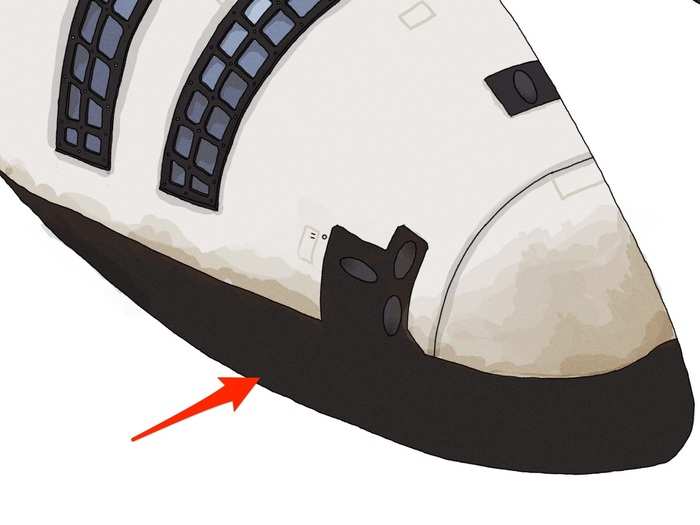
Oberg said he hopes Musk and SpaceX succeed in taking people to Mars.
"I've been waiting for what feels like most of my life for people to go beyond the moon, and it looks like it's finally going to happen," he said. "Every decade there's a new plan of, 'within a decade well send people to Mars' or the moon or an asteroid — and then it fizzles out."
He added: "Nothing came close to reality. We never saw parts of a manned Mars mission, never saw components of a spacecraft. But SpaceX has shown us. We get peeks every now and then of what they're working on in a tent."
Popular Right Now
Popular Keywords
Advertisement